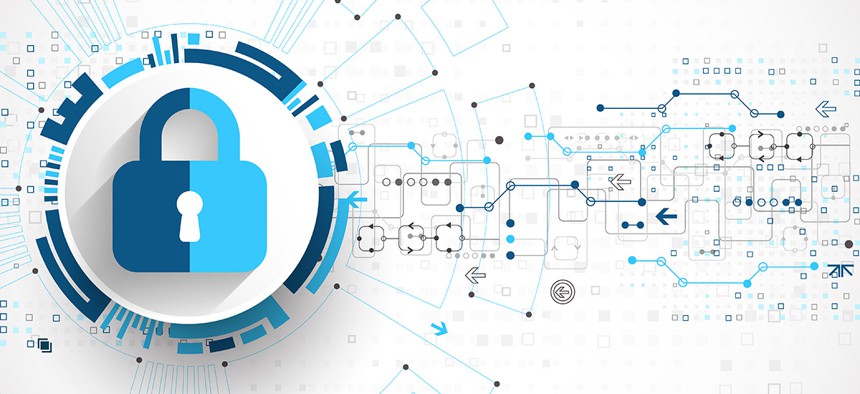HR and IT: A Partnership Poised to Protect Federal Cyber Systems

Omelchenko/Shutterstock.com
By partnering with IT, HR departments will assemble the must-have tech and people building blocks required to cover all essential areas.
Sudeep Dharan is chief technology officer at Acendre.
If the 2015 Office of Personnel Management breach has taught us anything, it’s hackers love to target federal HR departments—with a treasure trove of Social Security numbers, payroll data, email addresses and employee identification information contained within their systems.
Given the extent of damage an adversary can do with all of this, HR leaders and their teams must take a proactive approach in safeguarding their network, systems and devices—one that goes far beyond acquiring “set it and forget it” firewalls and other traditional cybersecurity tools.
Modern hacking methodologies grow more creative and sophisticated by the day. Not only do they continue to advance rapidly from a technology perspective, but they are increasingly mastering the human part of the equation too, i.e., the ability to manipulate well-meaning federal employees into compromising their agencies through phishing scams and other schemes.
Thus, a proactive approach positions HR to stay one step ahead of attackers. But it requires federal HR organizations to reach out to the IT department, to form a partnership to address both the technological and human-focused needs here. With an HR/IT partnership taking hold, agencies can pursue the following, key areas:
Security Verifications.
HR and IT should work together to ensure all federal personnel systems pass rigorous security verifications. Those subject to Federal Information Security Management Act and Federal Risk and Authorization Management Program standards are subject to the National Institute of Standards and Technology’s SP 800-53 security controls.
HR’s partnership with IT should safeguard the entire HR ecosystem, including the agency’s recruitment, onboarding, performance and learning initiatives. There should be ongoing scrutiny and validation your agency continues to comply with the latest security and privacy regulations, not just via a one-time event or point in time.
A Holistic Security Program
Data assurance does not begin and end with a certified stamp of approval from a verification authority. Through the IT partnership, HR must develop a holistic, strategic, enterprisewide security program. The program should provide answers to technology questions (“Are our solutions up to date?” “Will they enable us to effectively react in real-time to new threats?”) and human ones (“Do our users know what to do – and what not to do – when they encounter a potential phishing scam?” “Are we training them about these threats on an ongoing basis?”)
Overlooking the human element will likely prove disastrous, as ill-conceived behaviors on the part of employees (or contractual hires) account for one-quarter of data breaches, according to research from the Ponemon Institute. These errors create significant financial burdens, specifically $133 for every compromised record.
In cultivating a “cybersecurity culture” throughout the federal workforce, HR and IT teams train employees about best practices which apply to the daily use of computing devices. The teams illustrate to these staffers a commitment to information assurance does not have to arrive at a cost to productivity, that the implementation of effective measures and practices aren’t onerous intrusions that will prompt staffers to seek workarounds.
As indicated, ongoing education makes a tremendous difference here, with the Ponemon research revealing training reduces the cost of every compromised record by $9.
Risk Assessments
Via thorough, regular risk assessments, HR and IT partnership members pinpoint where your agency’s most critical data is stored, and what weaknesses could expose it. They also come up with risk/reward formulas which quantify exactly how much risk is acceptable, to strike the right balance between strong security controls and the need for organizational productivity. (It’s not realistic, after all, to impose a lock-everything-down series of policies, especially if the restrictions arrive at the expense of mission-benefiting performance.)
It’s clear agencies have to do better in assessing risk in a continuous and strategic manner: Less than one-half of executives say existing risk exposures are considered “mostly” or “extensively” within their organization when evaluating new initiatives, and just 25 percent indicate their organization has put in place a complete, formal enterprise risk management process, according to research from the Enterprise Risk Management Initiative at the Poole College of Management at North Carolina State University.
More than one-third conduct no formal assessments of emerging strategic, market or industry risks. Despite the lack of activity here, 57 percent of the surveyed executives believe the volume and complexity of risk has changed “extensively” or “mostly” in the last five years, according to the ERM findings.
We live in a different world today, one which is defined by escalating attack-landscape intricacies and changes. We don’t know when the next OPM or OPM-like attack is coming. Subsequently, data protection is no longer a one-off event. Nor is it a solo effort.
By partnering with IT, HR departments will assemble the must-have tech and people building blocks required to cover all essential areas. Adversaries are smart enough to distinguish proactive enterprises from passive ones. When they recognize HR has established a highly vigilant, holistic program—supported by a thriving cybersecurity workforce culture—to guard the data jewels, these cyber criminals will quickly move on to another treasure trove.


